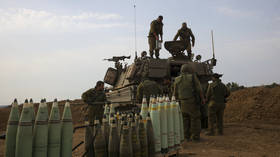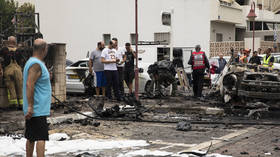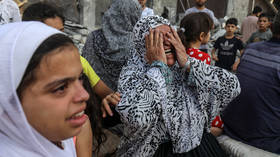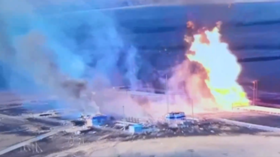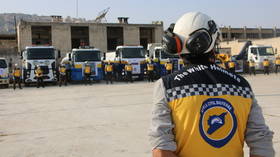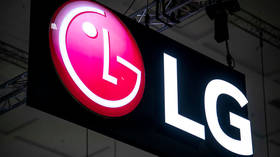Abbas Juma: Israel will suffer much more damage from this war than it might expect
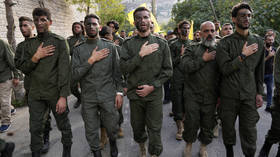
On October 7 the world was shocked by another flare-up of the Palestinian-Israeli conflict, and, this time, a very serious one. Not only did Hamas fire rockets at Israel, but it also penetrated Israeli territory. The operation, called Al-Aqsa Flood, has been unprecedented in terms of audacity and planning. Over a thousand Israelis have been killed, it's estimated, and more than 3,500 wounded, territories were captured, military personnel and civilians were taken hostage. Israeli Prime Minister Benjamin Netanyahu announced the start of a full-scale war, promising to leave the Gaza Strip in ruins.
The current events were a result of the biggest failure of Israel’s state security system in recent history. They have severely shaken the belief in the “omnipresence” of the Mossad (Israel’s intelligence service) and the invincibility of the Israel Defense Forces (IDF). For many hours, the Israeli army was utterly helpless as Palestinian armed groups attacked the country. Israeli intelligence also failed to prevent the catastrophe in any way. Meanwhile, even the day chosen by Hamas for the start of the operation was quite symbolic – the 50th anniversary of the 1973 Yom Kippur War.
Presently, the Israeli authorities have only one way out– to wash away their dishonor with the blood of the enemy. This could be done by pulling ground troops into Gaza and dealing a destructive blow to Hamas. Things, however, are further complicated by the fact that Hamas is not alone. It is backed by Iran and the Lebanese militant organization Hezbollah. Earlier, Hezbollah promised to open a second front, and today it openly joined the armed conflict on the side of the Palestinians. So far, it has taken action only from the border area. The sides are exchanging strikes, Hezbollah already has deaths, for which the leadership of the movement promised to take revenge.
Experts note that Hezbollah possesses advanced weapons, considerable combat experience, and has the full support of Tehran.
No need to underestimate the opponent
Former US Secretary of State Mike Pompeo has warned that Hezbollah has become more dangerous than ever in recent years. With major victories on the battlefield in Syria, huge weapons arsenals in Lebanon, and powerful allies throughout the region, Hezbollah is at the height of its military and political power, and is at its strongest since its founding in 1985.
It is not publicly known exactly what type of weapons Hezbollah possesses and how many weapons it has, or how large the organization’s combat units are (Hezbollah is not just a paramilitary formation, but a legitimate political party in Lebanon). However, some information is available. The publicly available data and observations, as well as information from people tied to the organization, allow us to draw certain conclusions.
The potential to surprise
Theoretically, everything that the Iranian military-industrial complex has to offer can be transferred to Hezbollah fighters. This includes dozens of types of missiles and drones. Moreover, Tehran aids Hezbollah with hundreds of millions of dollars annually. This means that Hezbollah can offer serious resistance to Israel not only on land, but also at sea and in the air. There is evidence that in recent years Hezbollah has acquired advanced naval military equipment, including Yakhont and C-802 anti-ship cruise missiles, as well as UAV submarines.
It also possesses ballistic missiles. Experts say that the range of Iranian missiles is 500-to-700 kilometers, which allows them to hit any point on the map in Israel.
As for the number of fighters, two years ago Hezbollah’s Secretary General claimed that the organization has about 100,000 trained fighters. Hassan Nasrallah stressed that this is only the number of professional soldiers. The organization may also enlist the support of numerous allied groups and followers from around the world.
A focus on missiles and more
Hezbollah’s arsenal of missile weapons has steadily grown since 2006 (the Second Lebanon War). According to media reports, it currently has about 200,000 missiles, including high-precision, intelligent missile systems, as well as drones and air defense systems.
Russia’s Kornet anti-tank missile system was used during battles in southern Lebanon in 2006, and was able to hit Israel’s Merkava tanks. As for the high-precision missiles that Netanyahu mentioned at the UN in 2017 and 2018, these are Zelzal artillery rockets (160-km range) which Iran actively used in the war with Iraq (1980-1988), Zelzal-2 artillery rockets (210-km range), and the Fateh-110 surface-to-surface ballistic missile. The latter was used during Operation Martyr Soleimani, launched by the Iranian Islamic Revolutionary Guard Corps (IRGC) against the US military in Iraq in response to the assassination of the commander of the Quds Force, General Qassem Soleimani, who was killed in Baghdad.
It is also known that the Iranians handed over countless artillery pieces and shells to their Lebanese colleagues. Moreover, Hezbollah possesses many heavy armored vehicles. Some of them we’ve seen during the Syrian campaign – for example, T-55, T-72, and T-80 tanks. The organization also has various types of infantry fighting vehicles and armored personnel carriers, the 2S1 Carnation self-propelled howitzer, the Shilka anti-aircraft self-propelled weapon system, and more.
Hezbollah is capable of firing 3,000 rockets per day across Israeli territory, and can reach targets at any distance. Experts also claim that, as of 2021, the Lebanese party had about 2,000 unmanned aerial vehicles (UAVs). Considering Iran’s highly successful development of combat drones, there is little doubt that this is indeed true.
Conclusions
Israel’s situation is further complicated by the existence of an extensive network of underground tunnels used by Hezbollah fighters for moving around, transporting military equipment, and storing weapons. The IDF regularly destroys tunnels stretching from southern Lebanon to northern Israel, but even the Israeli military recognizes that the number of secret underground passages is overwhelming, and it is impossible to destroy all of them.
Gadi Eizenkot, the 21st Chief of General Staff of the IDF, often noted that these tunnels allow Hezbollah to carry out unexpected strikes. However, the organization continues developing in further ways; it trains hackers and pays increasing attention to information technologies. Five years ago, I was able to interview Hezbollah’s media officer Muhammad Afif. This is what he told me at the time.
“We confront our enemies at all possible levels – including through intelligence services, special forces, ideology, and of course, the Internet. We do not intend to lag behind our opponents in anything. Hezbollah closely watches Israel's every move. Any new technology that they have, we have too. Hezbollah has a unit that specializes in electronic warfare and hackers. We pay a lot of attention to advertising, PR, and social networks. Of course, we cannot say that we are unrivaled in this, but it is a promising direction. Especially among young people who want to work online and know how to do it. For our part, we provide them with everything they need for training and work. Not only Lebanese people are involved – many young people from abroad support Hezbollah.”
Considering all of the above, we may draw several important conclusions. If Israel wins a full-scale war with Hezbollah, it will surely be a Pyrrhic victory. Hezbollah will also suffer irreparable damage as a result of a direct clash with Israel. However, there is a fundamental difference in the principles of the two sides. Hezbollah is an organization that was created (and exists) to fight and die, once it has fulfilled its mission of mortally wounding the enemy. The question is, would Israel be ready to do the same?

